Kidnappings. Guerillas. Impenetrable jungle. The Darien Gap is famous for many things. This 60-mile-wide swath of rainforest straddling the Panama-Colombia border has long been the stomping ground of drug traffickers and guerillas, most notably the left-wing FARC, who until 10 years ago were still conducting high-profile kidnappings of foreign travellers seeking to tackle this notoriously dangerous part of the world. Flash forward a decade and scientists working just outside the gap discovered that, while there were still occasional reports of violence, things were now relatively peaceful in the gap.
In May 2014, graduate student Sofia Rodriguez led an expedition to the mysterious Darien Gap, one of the least disturbed patches of rainforest in Central America. Video: Carla Avolio.
Today, the gap's greatest fame lies in what’s missing. It is the only interruption in the 30,000-mile-long Pan-American Highway that links the two American continents by a long strip of road from Alaska to the tip of Argentina. This break in the highway means that—for now at least—the Darien Gap is a place of no roads, few people, and as a consequence, almost singular ecological importance.
“The Darien Gap is one of the few areas left in Latin America where the rainforest is truly old growth,” says Sofia Rodriguez, a graduate student in the Department of Integrative Biology. “But because it is so difficult to access, we know very little about what is there.”
This past summer, Rodriguez became one of the few scientists to penetrate the Darien Gap in order to study the region’s biologically diverse wildlife. Rodriguez studies a devastating fungus known as chytrid, which is one of the leading causes of amphibian decline worldwide. In her quest to find populations that have not yet been infected, Rodriguez and a team of four biologists from the Department of Integrative Biology spent a week sampling túngara frogs 10 miles into the Darien Gap, in the UNESCO World Heritage Darien National Park.
“Seeing what was in the Darien Gap was a wonderful surprise,” says team member Mike Ryan, professor of integrative biology at The University of Texas at Austin and senior research associate at the Smithsonian Tropical Research Institute who has worked in tropical rainforests for over 30 years. “I had not seen that much pristine forest since visiting remote parts of the Amazon, where we had to fly in because there were no roads.”
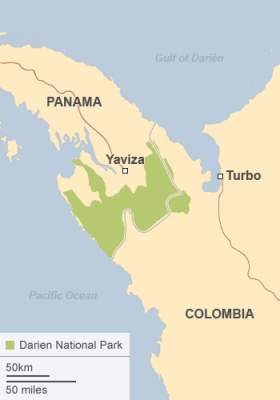 The idea to conduct fieldwork in the Darien Gap was born in the summer of 2013. Rodriguez and Ryan had spent a week traveling east through Panama to the infamous town of Yaviza, on the edge of the Gap, where the Pan-American Highway stops abruptly and comically in front of a football field. For Ryan, this was the first time in a decade that he had returned to east Panama for fieldwork. “I hadn’t gone back because it was so dangerous,” he says, noting that he’d decided to revisit sampling in the region after violence and unrest had drastically reduced.
The idea to conduct fieldwork in the Darien Gap was born in the summer of 2013. Rodriguez and Ryan had spent a week traveling east through Panama to the infamous town of Yaviza, on the edge of the Gap, where the Pan-American Highway stops abruptly and comically in front of a football field. For Ryan, this was the first time in a decade that he had returned to east Panama for fieldwork. “I hadn’t gone back because it was so dangerous,” he says, noting that he’d decided to revisit sampling in the region after violence and unrest had drastically reduced.
“We were there following the two waves of chytrid, which are converging on Panama’s Darien Province from the north and south,” he says. “We want to compare DNA from frog populations that have and have not been exposed to the fungus, so we can see if there are changes in the genes, which underlie immune responses.”
That trip, the pair experienced firsthand the extreme difficulty of working so close to the Colombian border in the Darien Province, where Senafront (Servicio Nacional de Fronteras) border police maintain tight control.
“When we were out sampling on our first night in Yaviza, a car pulled up and told us that we were in danger and that we should notify Senafront that we were there,” recalls Rodriguez. “So the next day we told the police what we did and I remember the look of shock on their faces. They told us that we were in a red-zone and we were not allowed to be there alone. That same night, we went out sampling with four armed military escorts.”
It was through spending time with Senafront, however, that the pair discovered the key to entering the Darien Gap.
“They told us about this field station in the National Park where we could sample, and even described to us how to get there from the end of the highway,” she says. “If I hadn’t had that experience, there is no way that I would have known where to start planning.”
All told, the planning took five months, as Rodriguez, who is from Costa Rica, worked like a detective to piece together fragments of information. “There is almost nothing available on getting to or around the Darien Gap,” she says. “I ended up reading blogs of people who had been, just to get an idea of what to do.”
Rodriguez had to find a local guide and arrange a raft of permits, which required the team to report at various Senafront checkpoints along the way. Equally important was preparing for the reality of surviving in a remote, tropical jungle where daily downpours can clock up 27.5 inches of precipitation per month. The team packed hammocks so they could sleep above the sodden ground, gumboots for walking through swollen streams, and brought in a week’s worth of food from Panama City.
From the end of the highway, it was a two-hour canoe ride, a one-hour truck ride down a dirt track, and a three-hour hike to reach the humble ranger station, Rancho Frio, set beside a crystal-clear river. Before setting foot in the Darien Gap, the team disinfected their shoes with bleach to prevent introducing contaminants into this potentially pristine forest. Once at the field site, the team spent the following nights sampling frogs, which they located by listening for males calling to nearby females, and taking swabs to test for the presence of chytrid. By day, they made sure to explore the surroundings with hikes and swims.
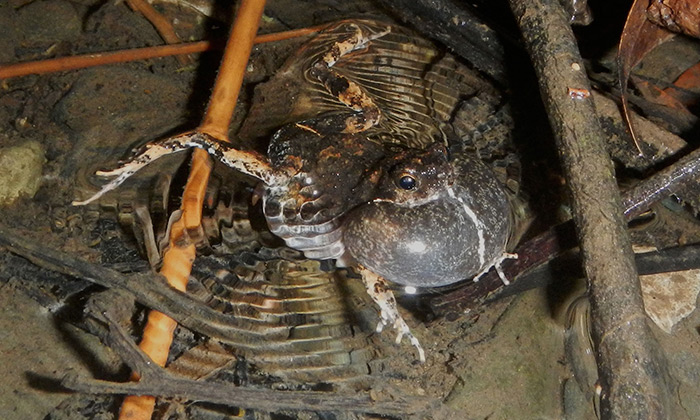
“You can tell a forest is primary and old growth when the trees are huge, the canopy is closed and there are vines and palms everywhere,” says Rodriguez, “and that was certainly what we saw in the Darien Gap. We also didn’t see a single piece of rubbish, or even another tourist, the entire time.”
Rodriguez and Ryan both say that the biggest revelation of the trip was realizing that the Darien Gap of today is a distinctly less threatening place than it was a decade ago.
“We never once felt in danger,” says Rodriguez. “In fact, it was quite the opposite. Everybody, from our guide to the villager who invited us into her house to watch the Champions League final on television, was so welcoming.
Since returning to Austin and processing the samples, Rodriguez has discovered that, sadly, the frogs in the Darien Gap are positive for the fungus. Chytrid, it seems, is universal in Panama. Despite this disheartening result, the grad student hasn’t given up hope for this remote and storied part of the world.
“I never imagined that I would enter the Darien Gap,” she continues. “But now, I can’t wait to go back to do more research and to be in that beautiful, peaceful forest again.”









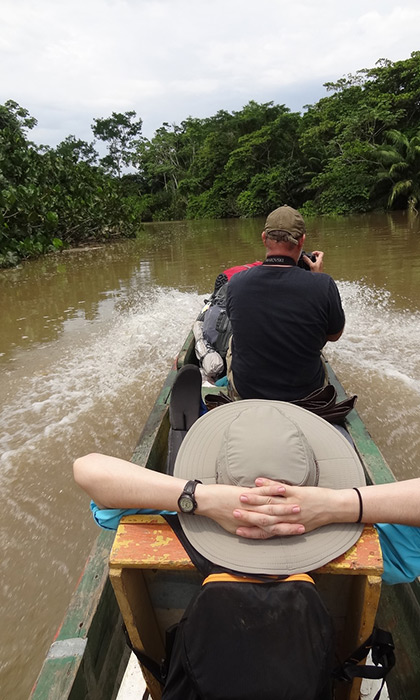
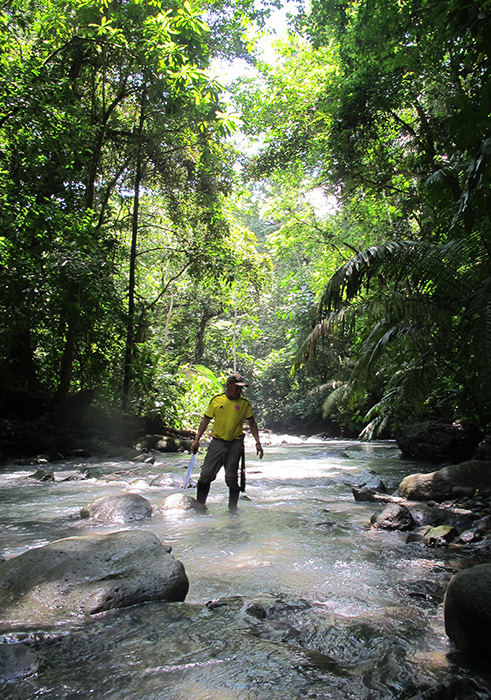
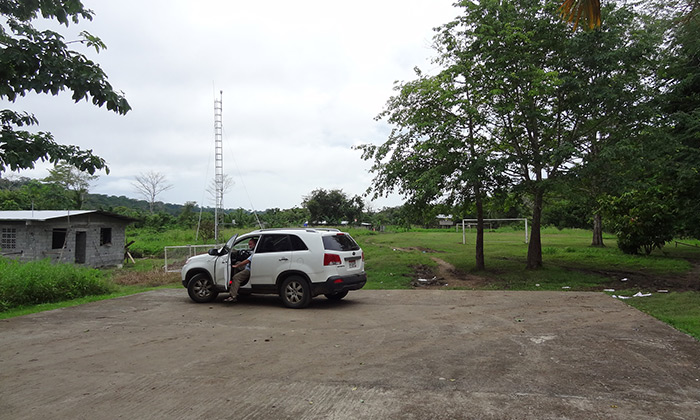
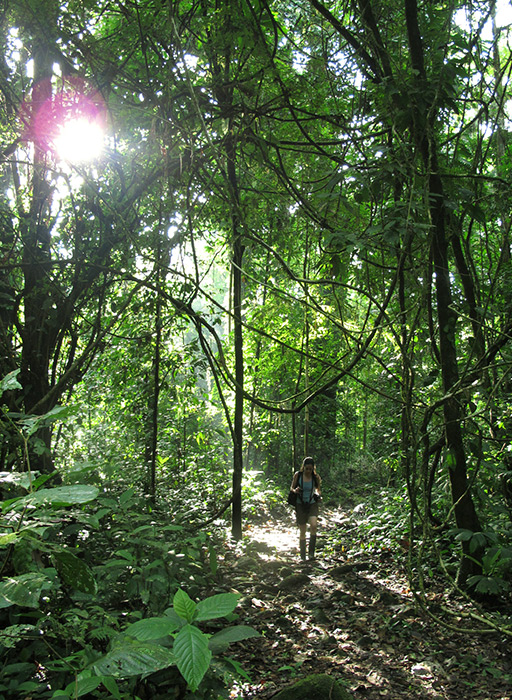
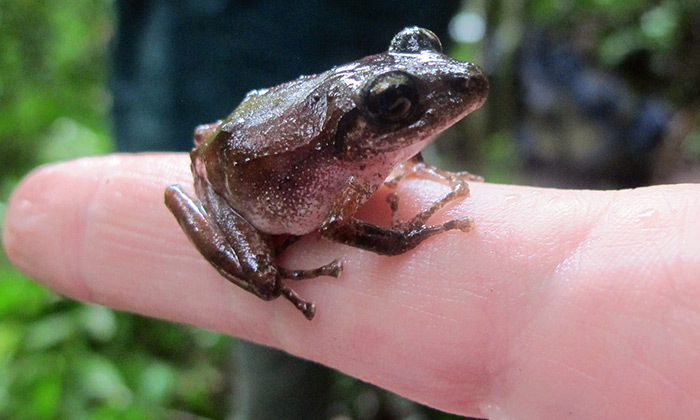
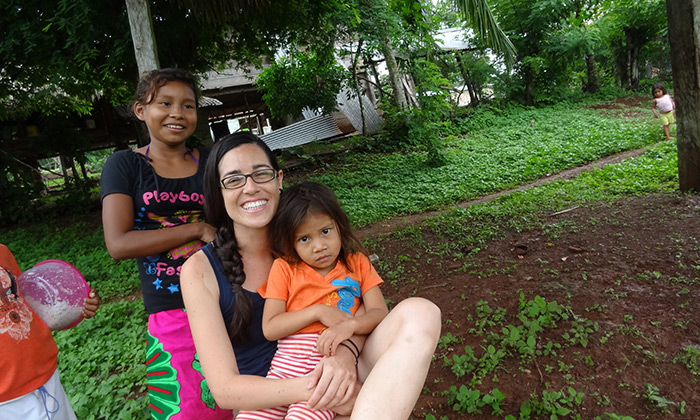
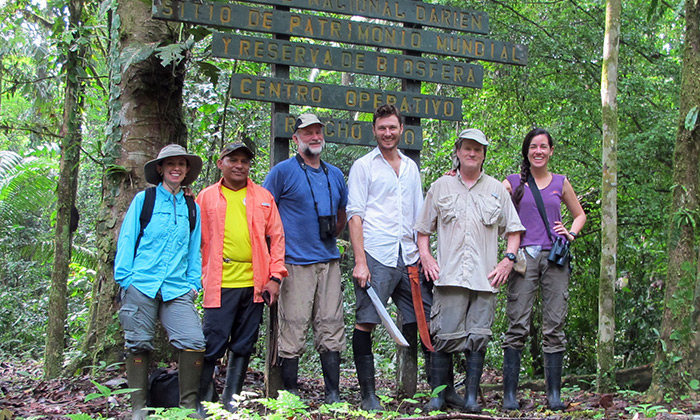









Comments 1
Dear Rodriguez,
Really great field trip you made and post, really usefull! I'm planning to go there too this month to experience the beauty myself.
However One thing I couldn't figure out and I hoped you could help me with, that is how I could get the permit for Senafront? Do you perhaps have an example what kinda documentation I need and where I have to do the request?
Any info would be more than helpful!
I hope to hear from you soon!
Martin